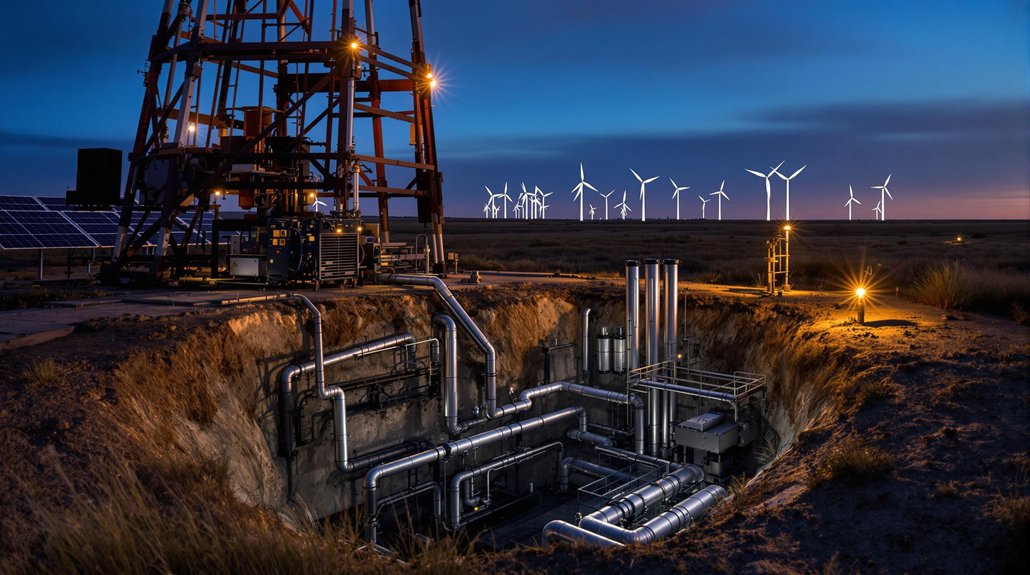Abandoned oil wells are getting a surprising second life as energy storage systems. Companies are repurposing these wells to store compressed air or materials deep underground. This innovation helps solve renewable energy’s intermittent power generation problem. The energy storage market is booming, with projections reaching $22.30 billion by 2030. This transformation addresses grid stability concerns while putting obsolete fossil fuel infrastructure to productive use. The details of this unexpected revolution reveal even more benefits.
As the world moves toward cleaner energy sources, the energy storage industry is experiencing a remarkable shift. Old oil wells, once abandoned and considered environmental liabilities, are finding new life as energy storage systems. This unexpected development is part of a booming global energy storage market that’s projected to reach $22.30 billion by 2030.
These repurposed wells offer a solution to one of renewable energy’s biggest challenges: intermittent power generation. When the sun isn’t shining or wind isn’t blowing, stored energy keeps the lights on. This solution addresses the fundamental problem of renewable energy intermittency that limits the reliability of clean power sources. The concept is simple but effective. Companies are using the deep underground caverns from former oil wells to store compressed air or other materials that can later generate electricity when needed.
This innovation comes at a critical time. The energy storage market is growing at a compound annual rate of 7.2%. In the US alone, battery storage nearly doubled in 2023, with experts predicting another doubling by 2027. Since 2019, long-duration energy storage projects have attracted $58 billion in investments.
What’s driving this growth? The rapid adoption of renewable energy, increasing needs for grid stability, and government policies supporting clean energy shift all play a role. These old wells are particularly valuable for long-duration energy storage (LDES), which can store energy for over 10 hours. Battery Energy Storage Systems can provide incredibly fast response times during grid emergencies, sometimes activating in as little as 10 milliseconds.
The technology joins other emerging storage solutions like solid-state batteries, flow batteries, gravity systems, and thermal storage using molten salts. Traditional lithium-ion batteries continue to improve too, with costs dropping 97% since 1991 and energy density improving 5-8% annually. Virtual power plants are increasingly coordinating these distributed energy resources to enhance grid stability across networks of storage systems.
However, challenges remain. Raw material constraints for batteries, recycling needs, and developing proper regulations are ongoing issues. But the industry keeps moving forward, with artificial intelligence now helping optimize energy management systems.
What’s clear is that yesterday’s fossil fuel infrastructure is finding remarkable new purpose in tomorrow’s clean energy economy. Old oil wells aren’t just relics of the past—they’re becoming valuable assets in our energy future.








